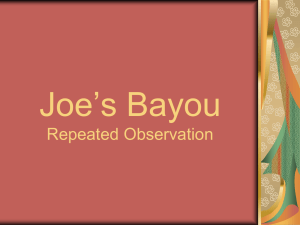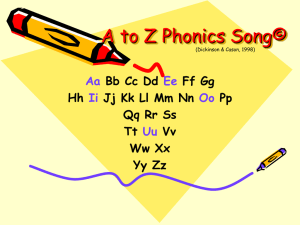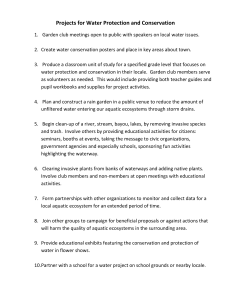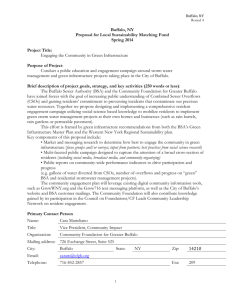etc3236-sup-0001-SupInfo-S1
advertisement
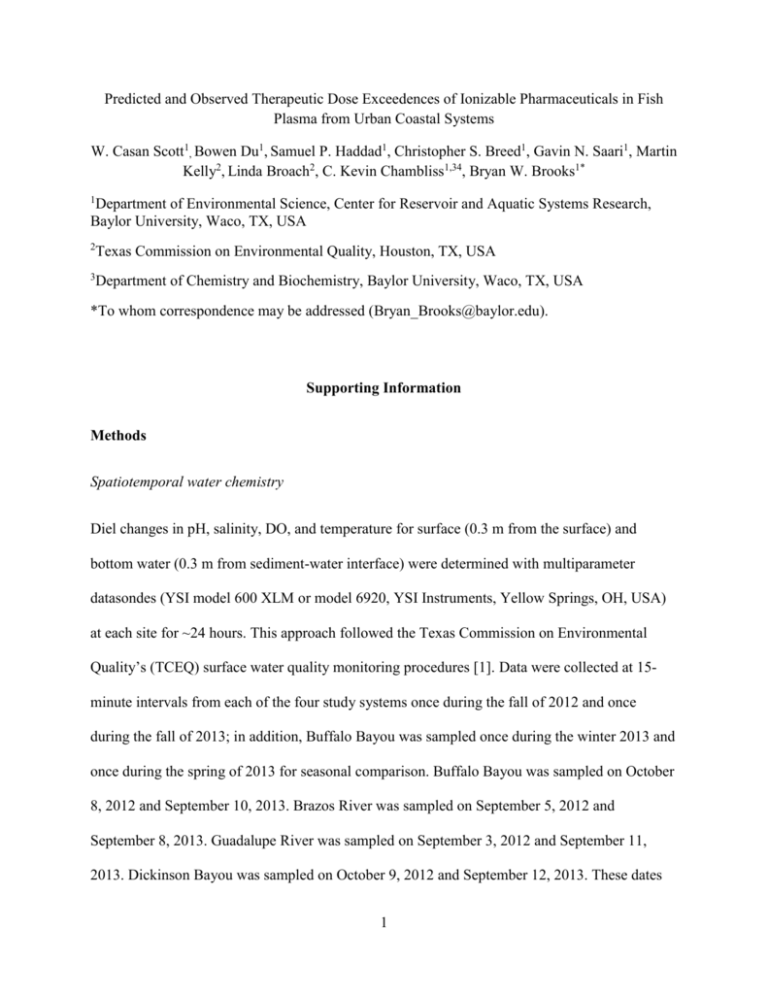
Predicted and Observed Therapeutic Dose Exceedences of Ionizable Pharmaceuticals in Fish Plasma from Urban Coastal Systems W. Casan Scott1, Bowen Du1, Samuel P. Haddad1, Christopher S. Breed1, Gavin N. Saari1, Martin Kelly2, Linda Broach2, C. Kevin Chambliss1,34, Bryan W. Brooks1* 1 Department of Environmental Science, Center for Reservoir and Aquatic Systems Research, Baylor University, Waco, TX, USA 2 Texas Commission on Environmental Quality, Houston, TX, USA 3 Department of Chemistry and Biochemistry, Baylor University, Waco, TX, USA *To whom correspondence may be addressed (Bryan_Brooks@baylor.edu). Supporting Information Methods Spatiotemporal water chemistry Diel changes in pH, salinity, DO, and temperature for surface (0.3 m from the surface) and bottom water (0.3 m from sediment-water interface) were determined with multiparameter datasondes (YSI model 600 XLM or model 6920, YSI Instruments, Yellow Springs, OH, USA) at each site for ~24 hours. This approach followed the Texas Commission on Environmental Quality’s (TCEQ) surface water quality monitoring procedures [1]. Data were collected at 15minute intervals from each of the four study systems once during the fall of 2012 and once during the fall of 2013; in addition, Buffalo Bayou was sampled once during the winter 2013 and once during the spring of 2013 for seasonal comparison. Buffalo Bayou was sampled on October 8, 2012 and September 10, 2013. Brazos River was sampled on September 5, 2012 and September 8, 2013. Guadalupe River was sampled on September 3, 2012 and September 11, 2013. Dickinson Bayou was sampled on October 9, 2012 and September 12, 2013. These dates 1 were chosen to be representative of the “Critical Monitoring Period” by the TCEQ and to not coincide with substantial rain events [1]. Datasondes were calibrated at room temperature within 24 hours prior to data collection, and then rechecked after deployment, as previously described [2,3]. Post-calibration checks following data collection were completed using error limits for pH, DO, specific conductivity, and temperature of 0.5 standard units, ±5% error at saturation, ±5% in μS/cm, and ±1 °C, respectively [2,3]. Spatiotemporal nutrient analysis Surface and bottom water samples for total nitrogen, total phosphorus, and dissolved nitrogen (nitrate/nitrite) and orthophosphate were collected from each site during data sonde deployment and transported back to the laboratory for analysis. Total N concentrations were determined using sulfanilamide method on persulfate digested samples (EPA 353.2). Total P concentrations were determined using the molybdate-blue method on persulfate digested samples (EPA 365.1). Nitrogen and phosphorous concentrations were measured colorimetrically using a Lachat Quickchem 8500 Flow Injection Autoanalyzer (Loveland, CO, USA). Ammonia concentration, and site-specific pH and temperature profiles were used to examine site-specific National Ambient Water Quality Criteria (NAWQC) for ammonia [4,5]. Results Spatiotemporal variability of diel water chemistry parameters 2 Variability among study systems. Results from continuous datasonde monitoring of the four study sites revealed that there were statistically significant (p < 0.05) differences between daily means for surface and bottom pH, salinity, dissolved oxygen, and temperature. Daily oscillations differed between the surface and bottom water among all four systems and between 2012 and 2013 (Figure S1). Further, summer stratification and winter mixing appears to have influenced variability of surface-to-bottom water chemistry of Buffalo Bayou (Figure S2). Water chemistry profiles taken during the fall of 2012 revealed significant (p < 0.05) differences in pH, salinity, dissolved oxygen, and temperature between each of these tidally influenced rivers. Only the surface water pH of the Guadalupe River and Dickinson Bayou, and surface water salinity between the Brazos River and Dickinson Bayou were not significantly different (p > 0.05). Further, surface and bottom water chemistry parameters at each site were significantly different (p < 0.05) with dissolved oxygen in the Guadalupe River as the only exception (Figure S1). During the fall 2013 sampling period, pH differed (p < 0.05) among water bodies with the exception of the Guadalupe River and the Brazos River, and the Guadalupe River and Dickinson Bayou, and Dickinson Bayou and the Brazos River. As expected for tidally influenced systems, salinities were significantly higher in bottom water samples than surface (p < 0.05), except for Dickinson Bayou and Buffalo Bayou. Temperature across all tidally influenced systems was significantly different (p < 0.05) with the exception of the Brazos River and Dickinson Bayou surface water (Figure S1). Dissolved oxygen in Brazos River surface water was not significantly different from the surface water of the Guadalupe River, Buffalo Bayou, or Dickinson Bayou. Dissolved oxygen of Dickinson Bayou bottom water was not significantly different than bottom waters of Buffalo Bayou or the Brazos River, all with median values below 2 mg/L. Subsequently, we examined exceedences of near-surface (0.3m from surface) dissolved oxygen 3 water quality criteria for both surface and bottom sites (Table S1). Though depressed dissolved oxygen was occasionally observed in surface water samples (e.g., Guadalupe River in Fall 2012 and 2013), dissolved oxygen was commonly observed below water quality criteria in bottom locations of all four systems during Fall 2012 and 2013 (Table S1). Seasonal variability within Buffalo Bayou. In the present study, we also explored seasonal pH dynamics of Buffalo Bayou. Median pH values were typically significantly different (p < 0.05) across the four seasons sampled except for surface water in the fall of 2012, winter 2013, and fall of 2013, and the bottom water between the fall of 2012 and fall of 2013. Salinity was not significantly different between surface and bottom water during the winter of 2013. Surface water salinity measurements in winter and spring 2013 also did not significantly differ, while only the bottom water in spring 2013 exhibited some marine influence with intermittent salinities above 1.0 ppt. Temperature was greater at the surface compared to the bottom across all seasons except during the Fall of 2013 (Figure S2). Dissolved oxygen was significantly different (p < 0.05) across all four seasons and higher in surface water, compared to bottom, at all sample locations. Depressed dissolved oxygen levels were observed in bottom water samples of Buffalo Bayou during Fall 2012 and 2013 sampling events but not during Winter or Spring 2013 (Table S1). Spatiotemporal variability of nutrients Sampling period did not have a significant effect on total nitrogen, total phosphorous, orthophosphate, ammonia, or nitrate/nitrite concentrations (Table S2). Concentrations of total nitrogen, total phosphorous, orthophosphate, and nitrate/nitrite did significantly differ (p < 0.05) 4 among the four sampling sites, while ammonia did not. Concentrations of all nutrients were not significantly different with depth, nor was there a significant interaction between site and depth (Table S2). Probabilistic distributions of measured ammonia concentrations and site-specific Criterion Continuous Concentrations (CCC), which are applied to near-surface samples (0.3m from surface) for regulatory purposes, are reported in Figure S3. The CCC is an estimate of the highest concentration of a pollutant to which an aquatic community can be exposed indefinitely (chronic limit) without resulting in unacceptable adverse effects. It is important to note that the bottom water sample from Dickinson Bayou in Fall 2013 was the only water body to exceed the ammonia CCC (Figure S3), but this observation would not have been made if only surface water samples were collected. References 1. Texas Commission on Environmental Quality. 2012. Surface Water Quality Monitoring Procedures Volume 1: Physical and Chemical Monitoring Methods for Water. Sediment, and Tissue. Austin, TX. 2. Texas Commission of Environmental Quality. 2012 Guidance for Assessing and Reporting Surface Water Quality in Texas. Monitoring Operations, Surface Water Quality Monitoring Program, Austin, TX. 3. Texas Commission of Environmental Quality. 2003. Surface Water Quality Monitoring Procedures Volume 1: Physical and Chemical Monitoring Methods for Water, Sediment and Tissue. Publication NO. RG-415, December 2003, Austin, TX. 4. U.S. Environmental Protection Agency. 2009. Draft 2009 Update aquatic life ambient water quality criteria for ammonia-Freshwater. EPA-822-D-09-001. Office of Water, Washington, DC. 5. U.S. Environmental Protection Agency. 2013. Update aquatic life ambient water quality criteria for ammonia-Freshwater. EPA-822-D-09-001. Office of Water, Washington, DC. 5 Figure S1: A box-and-whisker plot showing diel distributions of pH in Fall 2012 (A) and in Fall 2013 (B), salinity in Fall 2012 (C) and in Fall 2013 (D), dissolved oxygen in Fall 2012 (E) and in Fall 2013 (F), and temperature in Fall 2012 (G) and in Fall 2013 (H) in Buffalo Bayou, Brazos River, Guadalupe River, and Dickinson Bayou, Texas, USA. 6 Figure S2: A box-and-whisker plot showing diel distributions of pH (A), salinity (B), dissolved oxygen (C), and temperature (D) in Buffalo Bayou, Texas, USA, during 2012 and 2013. 7 Figure S3: Probability distributions of Ammonia Criterion Continuous Concentration (CCC) overlaid with measured surface and bottom water concentrations of ammonia for Buffalo Bayou in 2012 (A) and 2013 (B), Brazos River in 2012 (C) and 2013 (D), Guadalupe River in 2012 (E) and 2013 (F), and Dickinson Bayou in 2012 (G) and 2013 (H). 8 Table S1: Site-specific daily mean and minimum dissolved oxygen for Buffalo Bayou, Brazos River, Guadalupe River, and Dickinson Bayou. Daily mean and minimum water quality criteria are based on designated Aquatic Life Uses as described by the Texas Commission on Environmental Quality for surface water samples (0.3m from surface). This table includes the probability of exceeding dissolved oxygen criteria over a 24-hour deployment (n=96) during each sampling period for both surface and bottom waters. Dissolved Oxygen Criteria (mg/L) Percent Below Criteria Sampling Period Site Depth Daily Mean Daily Minimum Fall 2012 Buffalo Bayou Surface 1 1 0% 0% Bottom 1 1 13% 13% Surface 4 3 0% 0% Bottom 4 3 96% 92% Surface 5 4 99% 0% Bottom 5 4 99% 0% Surface 4 3 4% 0% Bottom 4 3 82% 76% Surface 1 1 0% 0% Bottom 1 1 19% 19% Surface 4 3 40% 14% Bottom 4 3 100% 96% Surface 5 4 96% 31% Bottom 5 4 100% 93% Surface 4 3 15% 3% Bottom 4 3 86% 79% Surface 1 1 0% 0% Brazos River Guadalupe River Dickinson Bayou Fall 2013 Buffalo Bayou Brazos River Guadalupe River Dickinson Bayou Winter 2013 Spring 2013 Buffalo Bayou Daily Mean Daily Minimum Bottom 1 1 0% 0% Surface 1 1 0% 0% Bottom 1 1 0% 0% 9 Table S2: Nutrient concentrations in mean (N =2) surface and bottom waters of four Gulf of Mexico estuaries in Texas, USA, during different sampling events. TN, total nitrogen; TP, total phosphorous; Phosphate; Ammonia; Nitrate/Nitrite; MDL, method detection limit. Sampling Period Site Depth TN (µg/L) TP (μg/L) Phosphate (μg/L) Ammonia (μg/L) Nitrate/Nitrite (μg/L) Fall 2012 Buffalo Surface 6440 1330 1260 206 5550 Bottom 4590 1090 1020 138 4570 Brazos Surface 705 148 48.6 < MDL 2.05 Bottom 1350 363 113 186 255 Surface 1020 188 115 22.3 544 Bottom NA NA NA NA NA Surface 961 225 169 < MDL 0.35 Bottom 954 310 262 237 67.2 Surface 5820 1450 1310 275 5030 Bottom 4520 1360 1090 68.7 4030 Surface 758 264 171 < MDL 22.2 Bottom 689 268 193 < MDL 25.1 Guadalupe Surface 3280 399.5 264 < MDL 2730 Bottom 2930 377 302 < MDL 2520 Dickinson Surface 1090 361 233 < MDL 0.35 Bottom 1710 691 511.5 915.5 5.11 Guadalupe Dickinson Fall 2013 Buffalo Brazos Sampling Period Site Depth TN(ug/L) TP(ug/L) Phosphate (ug/L) Ammonia (ug/L) Nitrate/Nitrite (ug/L) Fall 2012 Buffalo Bayou Surface 6440 1330 1260 206 5550 Bottom 4590 1090 1020 138 4570 Surface 2000 415 248 < MDL 1430 Bottom 1670 398 266 16.1 1090 Spring 2013 Surface 7275 579 343 551 2470 Bottom 1752 419 517 482 1680 Fall 2013 Surface 5820 1450 1310 275 5030 Bottom 4520 1360 1090 68.7 4030 MDL: 2.15 1.05 1.35 8.46 0.82 Winter 2013 10
